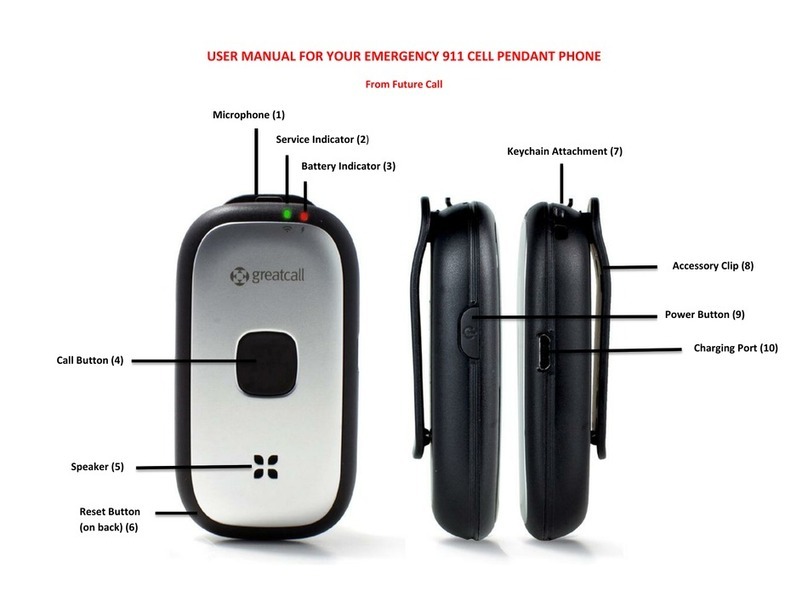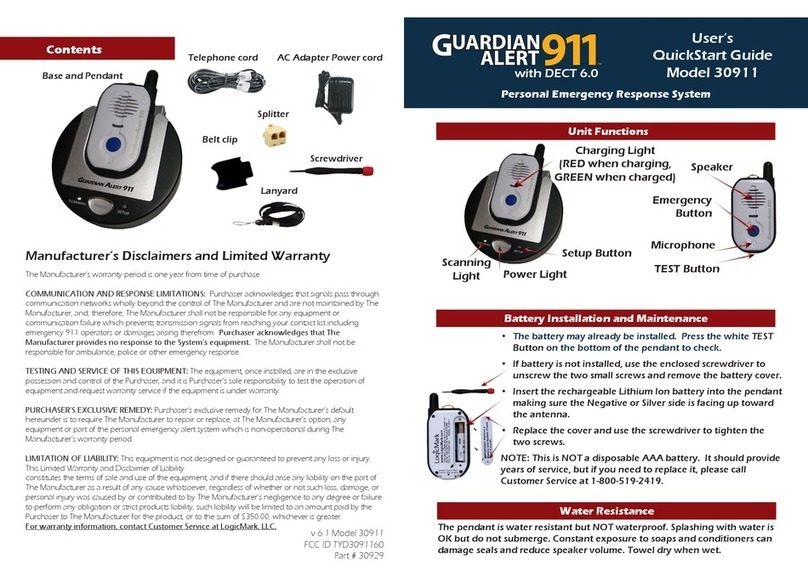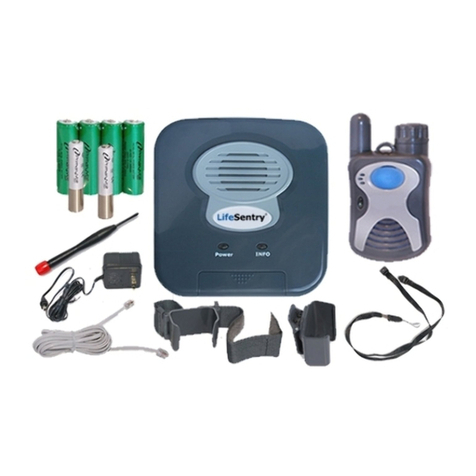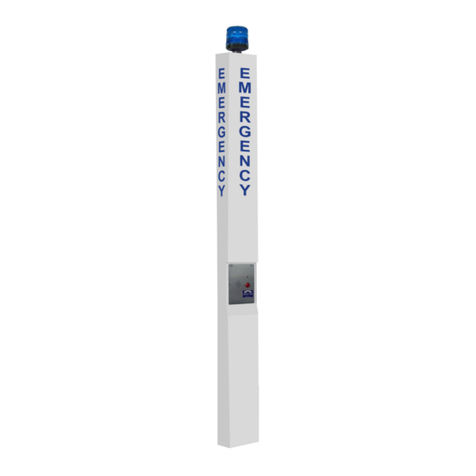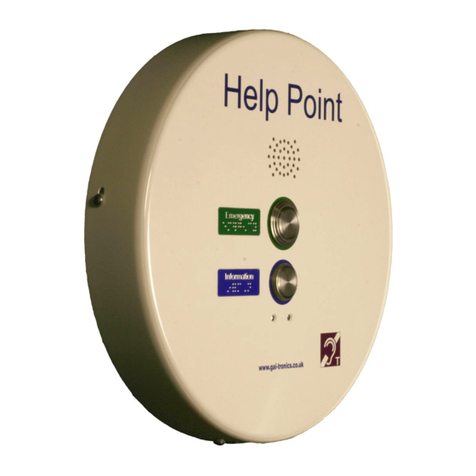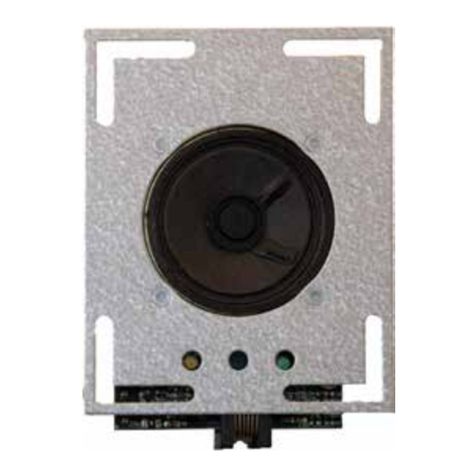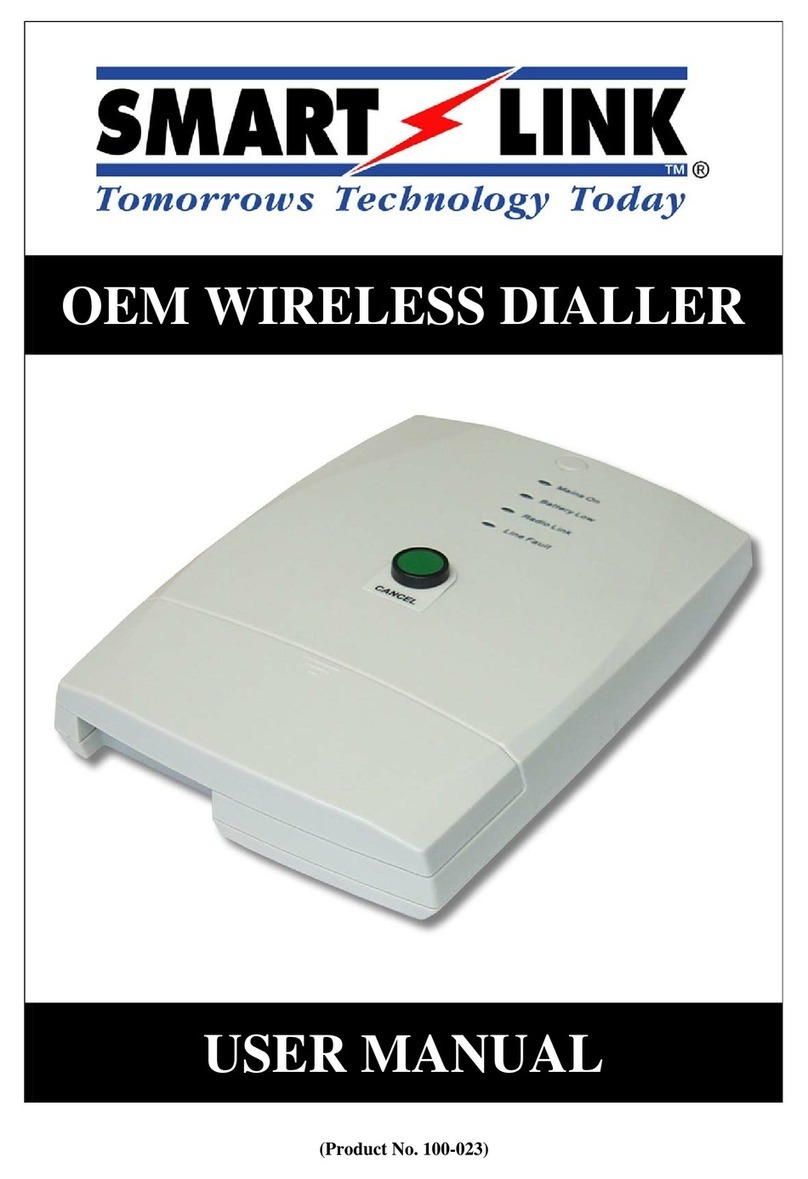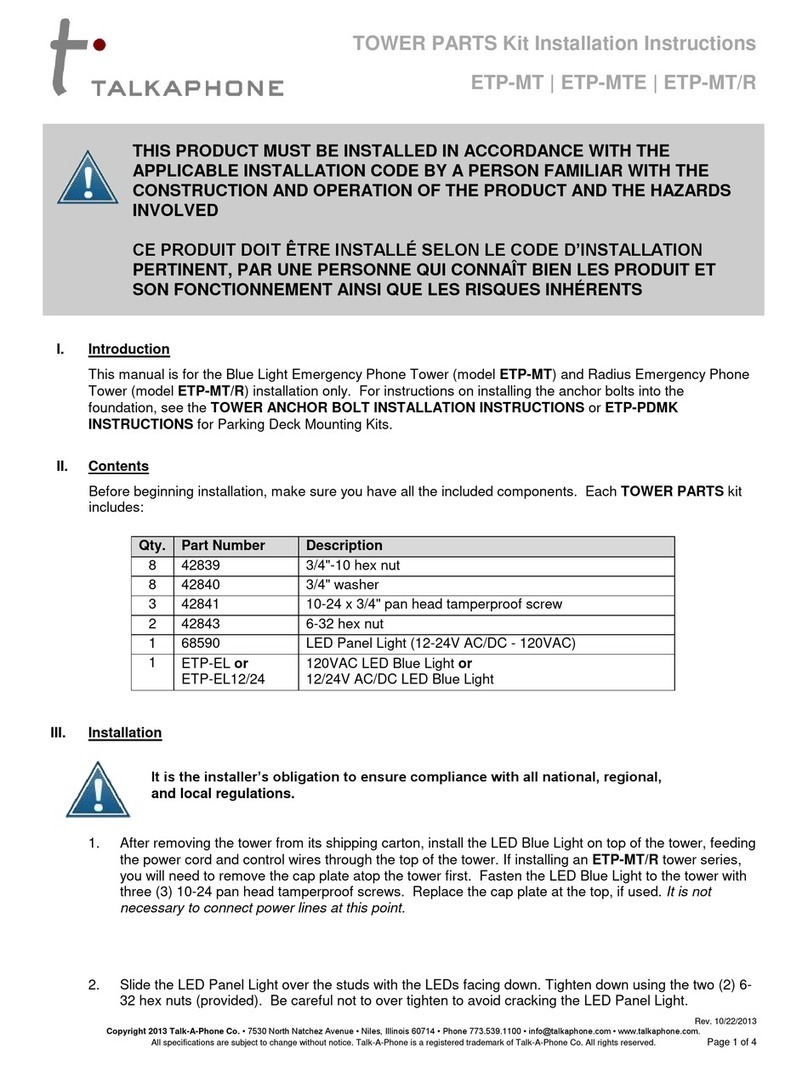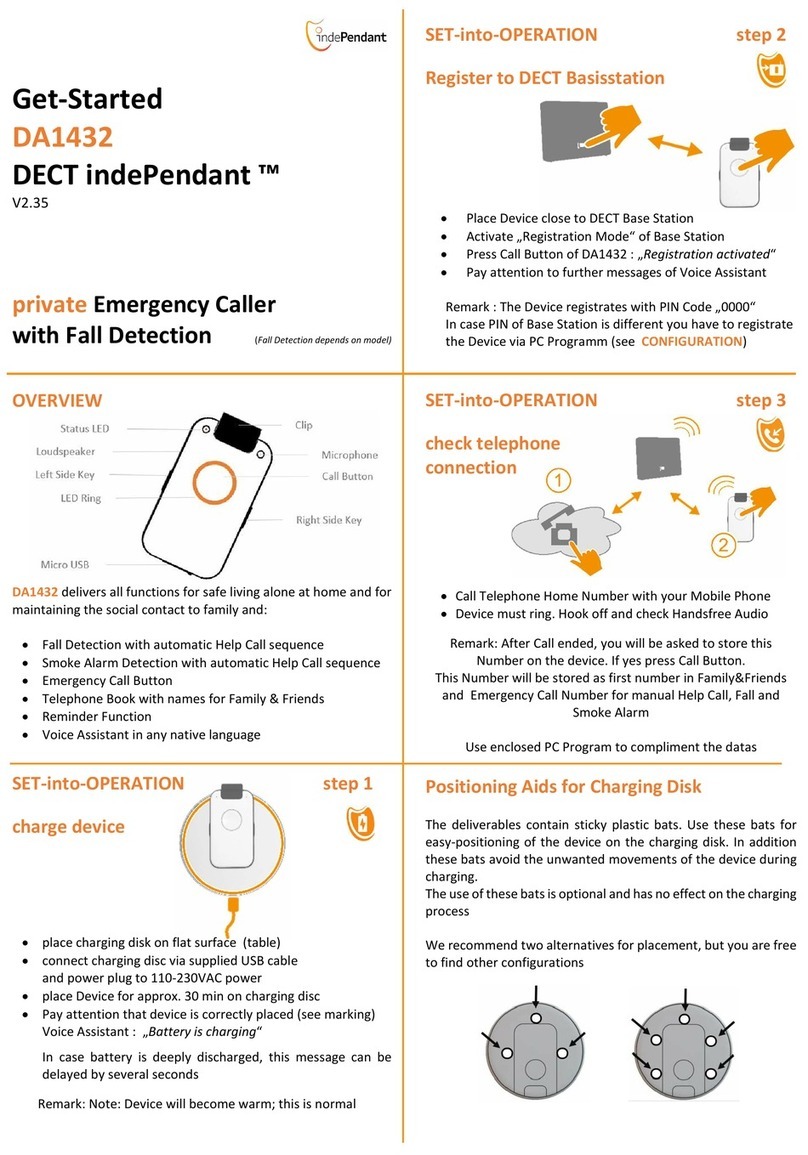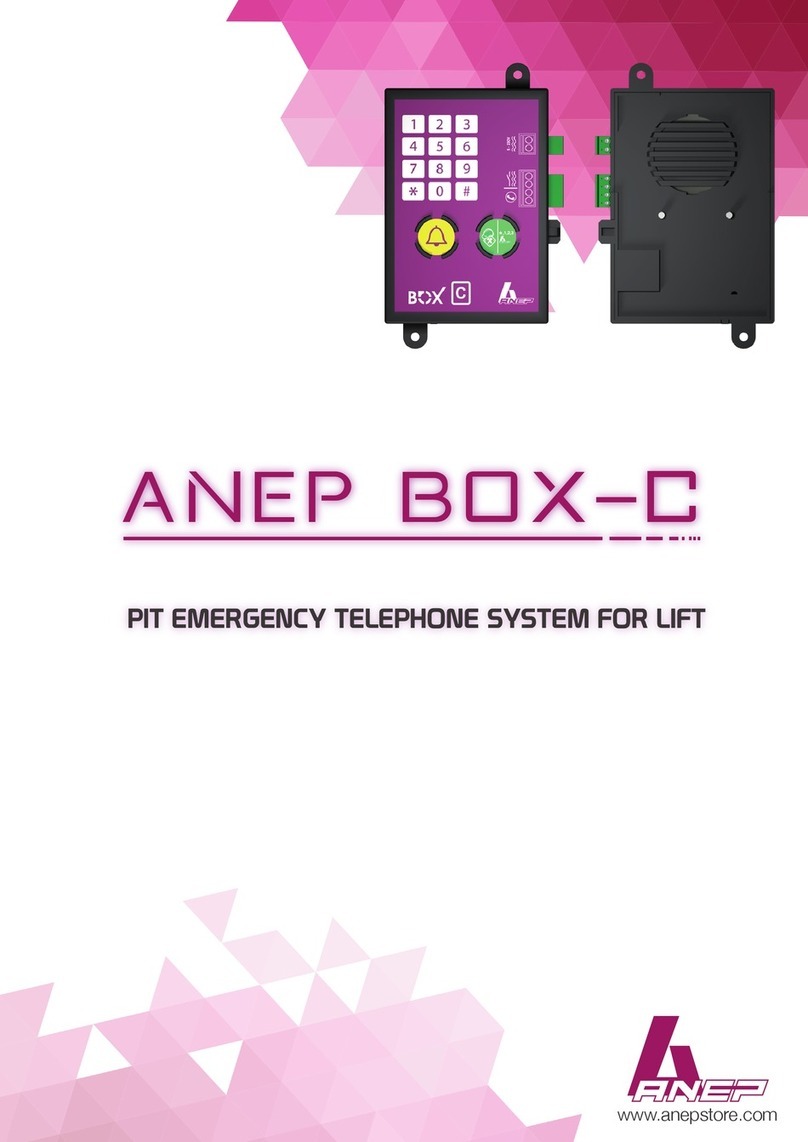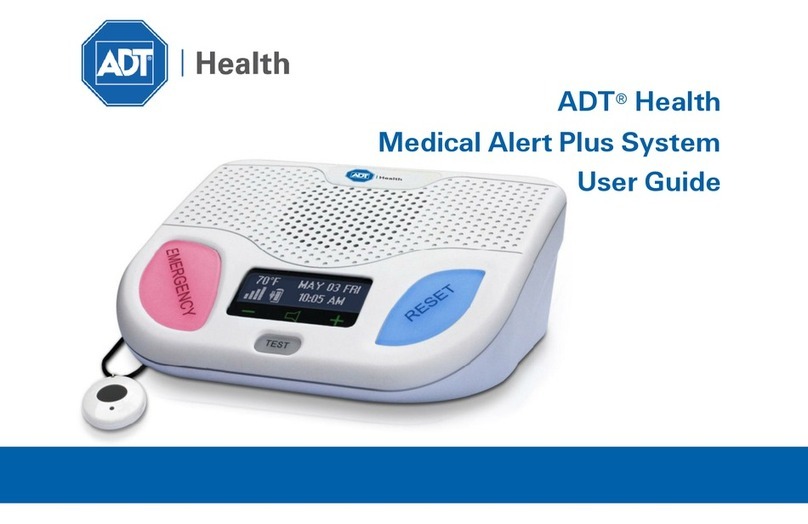Applicant: Matsushita Electric Works, Ltd. Transmitter Type: HHV20021106
Emergency Portable Cellular Telephone
Retry sequence is as follows:
1) ERC-1 Access (Preferred system)
| Fail
2) ERC-1 Access (Non-Preferred system)
| Fail
3) ERC-2 Access (Preferred system)
| Fail
4) ERC-2 Access (Non-Preferred system)
| Fail
5) 911 Access (Preferred system)
| Fail
6) 911 Access (Non-Preferred system)
| Fail
7) Sounds Siren (ON: 2sec, OFF: 8sec)
|
will go to 1)
2.2.3. Voice Conversation
The unit incorporates a built-in speakerphone arrangement. A speakerphone arrangement is preferred for this
service in order to provide a viable means of voice communication between a user and ERC personnel. During an
emergency, the user may be incapacitated or fallen and the unit may be on the ground or floor. A speakerphone
would, at least enable the ERC personnel to be able to listen to the user or their surroundings. In addition, the user
would have the ability to converse with the ERC personnel without having the device up to their ear. The
speakerphone would be optionally switched in to the cellular traffic channel by the ERC immediately after the ESN,
MIN and latitude/longitude information was sent and acknowledged.
2.2.4. Emergency Response Center (ERC)
The Emergency Response Center (ERC) consists of emergency call response personnel and links to local
emergency response institutions (e.g. Police, Fire, Hospital, Ambulance, etc.).
Once a user emergency button has been pressed on the unit, the ERC will be contacted via the cellular network.
The transmitted data from the unit will include the raw GPS data, the unit electronic serial number (ESN), and the
unit mobile identification number (MIN). The ERC system will then convert the raw GPS data (latitude/longitude) to
a location and user information will be mapped on the dispatch console of the ERC.
After the GPS data is received from the unit, the unit and ERC will then optionally be linked via the cellular traffic
channel for two-way voice communication. This will be via a speakerphone arrangement incorporated in the unit.
ECG2111
- 5 -
